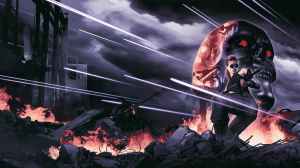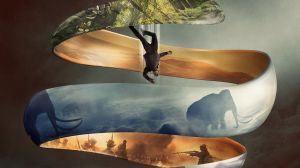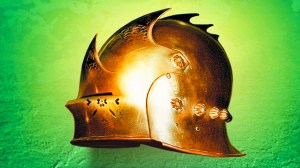Now that the calendar reads February, the team behind the Webb Space Telescope released the observatory’s picture of the month. Wednesday, NASA shared the image in question, a stunning snapshot of a massive spiral galaxy in a chunk of the universe literally billions of miles away. Though dozens—maybe even hundreds—of galaxies are seen in the picture, a beautiful glimpse of LEDA 2046648 can be seen.
Videos by ComicBook.com
Similar to our own Milky Way, the spiral galaxy is located just over a billion light-years away from Earth and resides in the constellation Hercules. “Taken during instrument calibration, this image helped test Webb’s ability to dig up galactic fossils,” NASA said in a release with the picture. “Ancient galaxies are so far away that as space expands, their light has stretched into infrared wavelengths — Webb’s specialty.”
NASA, along with the European Space Agency (ESA), hopes to use images and other similar data to explore the furthest reaches of space.
“One of Webb’s principle science goals is to observe distant galaxies in the early universe to understand the details of their formation, evolution, and composition,” the ESA said in a press release. “Webb’s keen infrared vision helps the telescope peer back in time, as the light from these distant galaxies is redshifted towards infrared wavelengths. Comparing these systems with galaxies in the local universe will help astronomers understand how galaxies grew to form the structure we see today. Webb will also probe the chemical composition of thousands of galaxies to shed light on how heavy elements were formed and built up as galaxies evolved.”
What is the Webb Space Telescope?
In short, the Webb observatory is the successor to the Hubble Space Telescope. Using its new technology, scientists have been able to examine parts of the known universe previously unobservable.
“If you think about that, this is farther than humanity has ever moved before,” NASA administrator Bill Nelson previously said of the JWST. “And we’re only beginning to understand what Webb can and will do. It’s going to explore objects in the solar system and atmospheres of exoplanets orbiting other stars, giving us clues as to whether potentially their atmospheres are similar to our own.”
“Our goals for Webb’s first images and data are both to showcase the telescope’s powerful instruments and to preview the science mission to come,” astronomer Klaus Pontoppidan, Webb project scientist at STScI, added of the images. “They are sure to deliver a long-awaited ‘wow’ for astronomers and the public.”
For additional space and cosmic stories, check out our ComicBook Invasion hub here.








